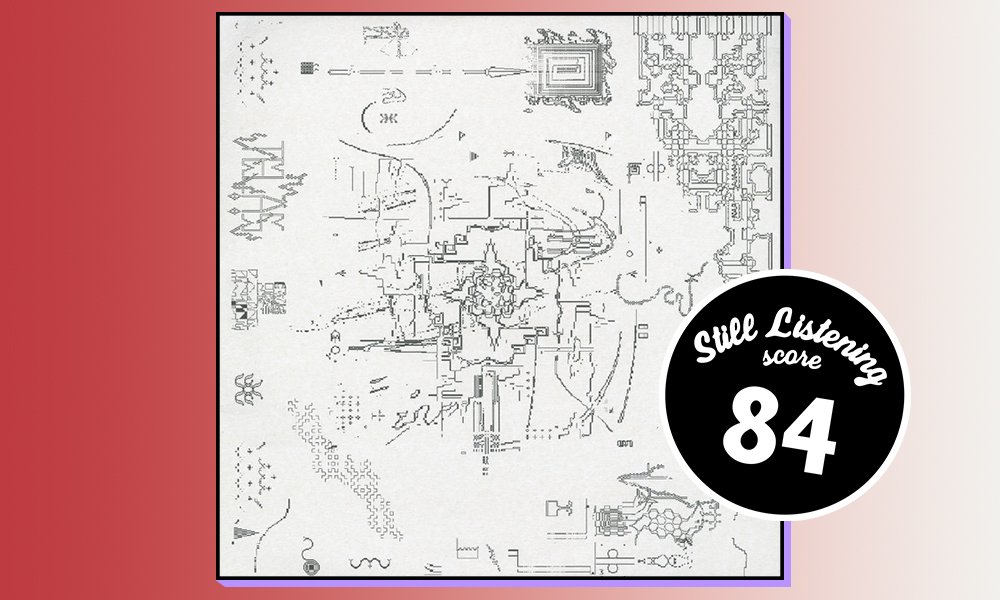Nicolas Jaar - Telas Review
The album constantly stores its own motifs for callbacks further down the line, and its evocative wandering feels rather like a ball rolling across a membrane, trying to break through and causing small rips in the fabric, but never quite falling through.
Telas, the third album release in 2020 by Nicolas Jaar, is an ambient journey through haunting motifs and refreshingly open spaces. With any four-track record clocking in around an hour, it’s not always easy to keep track of what’s going on throughout. But this needn’t be an issue by any means, as Jaar’s compositional talent builds a sonic world which you can freely explore. And he does this quite literally too: prior to the official release of Telas, Jaar launched the website telas.place (https://telas.place), which showcases the album in its “liquid state”.
In collaboration with developer and artist Abeera Kamran and artist Somnath Bhatt, the liquid state of Telas is a spatially crafted website allowing some level of interaction with the album’s sonic elements. And the defragmentation of the record doesn’t end there: a visit to the /r/nicolasjaar subreddit reveals a community poring through the website’s backend to unearth a plethora of small soundbites. An early disclaimer in this review: it’s painfully tough to review this album without feeling pretentious so you’ll have to excuse me when I say that the record is a journey through spatial imagination just as much as it is a sonic piece of art. But don’t let a pretentious review scare you away from a listen.
The first piece, Telahora, welcomes you into this journey with a bellowing horn, quickly joined by a heavy rattle of percussion. It’s an interesting opening, not least because it almost feels like it’s surrounding you with a sense of finality – a haunting feeling that you may be walking to your own demise. Just as the track begins to build, it almost completely cuts out (apart from the drawling bass), paving way for Jaar to engage in sounds less ‘organic’, and more hypnotically electronic. And again, he builds. Whenever the opener returns to a more organic sound, it’s permeated with a high-pitch crackle, almost like a glitch within the track. At one point I even wondered what was up with my sound. As it unravels, the track’s only constants seem to be the moribund atmosphere, and its willingness to change. It deviates more and more from those opening horns into an industrial darkness that wouldn’t feel amiss in a Rødhåd boiler room set (https://www.youtube.com/watch?v=8tus3FfzRtA). Telahora is, if nothing else, a masterclass in suspense, in the creation of on-your-toes-keeping dramatic poetry, all without the need for words.
Speaking of which, the first time we hear a voice certifiably human is within the last 3 minutes of Telahora: a low murmuring whisper carries us through to the second piece, Telencima. Jaar isn’t tied to a need for a change in sound to go along with a change in tracks. For him, track changes needn’t feel like breaks in the medium; breaks in the medium may punch their way through wherever he sees fit. Throughout Telencima this breaking (and re-breaking) of concepts continues, albeit with a less macabre tone. For all the points of Telahora that brought us to feeling on the brink of a chasm, and at the end of a break, the formless nature of Telencima instead feels more akin to a period of rebirth. This is massively helped by phases of music that wouldn’t feel out of place on Floating Point’s Elaenia or Reflections – Mojave Desert.
The last two tracks are somewhat closer to a conventional form than we’ve seen elsewhere on Telas. That said, don’t expect anything familiar. Themes are brought together with more cohesion, even if they aren’t ever-lasting throughout. Telahumo sounds like an aural telling of what it means to perceive, to absorb information and create something new from it, and acts like a demonstration of Dabrowski’s theory of ‘Positive Disintegration’.
Where Telencima felt like a continuation of Telahora, the album’s closer Telallás begins like a repeat of what Telahumo sought to achieve. But soon enough, the darker sentiments that kicked off the album return with a vengeance. And this time they’re here with a sense of awakening as opposed to breaking. If the first half of the album is categorised by death and birth, the second half highlights all the life in-between. It feels fruitless trying to identify which instruments are being used throughout the whole record: synths blend into strings which become bells; percussion ranges from the sound of hand-tapped drums to the clanging of metal; clarinets stick their noses in; raindrops seem to tap upon electronic keys. It’s like navigating a jungle of sounds without a map. But Telallás reunites the themes of the album for one final push through the uncharted spaces. The emptiness returns and the fabric of sound that Jaar has weaved for an hour is slowly pulled from beneath us.
English: (anatomy) A thin, weblike structure or membrane.
Finnish:A place where something is left or stored; usually in adessive, ablative or allative plural.
Spanish: Fabric, or cloth.
An educated guess would be that Jaar, a Chilean-American composer, took this album name from the Spanish term. But all three definitions feel apt. The album constantly stores its own motifs for callbacks further down the line, and its evocative wandering feels rather like a ball rolling across a membrane, trying to break through and causing small rips in the fabric, but never quite falling through. The album is certainly something to be consumed in one sitting: not fit for picking apart for a Spotify playlist, or showing off at a house party. And it’s worth multiple listens: grabbing you in different ways each time.

